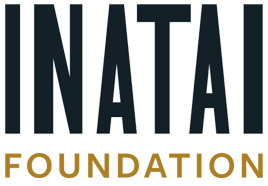Resources | Organizational Identities
Guide: Identifying your orgANIZATION
Cross-racial organization
Cross-racial organizations bring together constituencies of different races and ethnic identities to share power for the purpose of advancing racial justice. Cross-racial organizations consolidate people, power, and influence to achieve intended outcomes. They are often formed by coalitions of culturally specific organizations and are led by Black, Indigenous, and other people of color. They are accountable to their communities and constituencies.
Culturally specific organization
Culturally specific organizations are created by and for people of a specific racial or ethnic identity group and are accountable to that community. People from that group serve on the board and in leadership positions—roles that hold the most power and influence in deciding an organization’s priorities, direction, and practices. Culturally specific organizations systematically embed community norms and practices throughout their visions, operations, governance, management, and community engagement. Because they are centered and informed by the experiences of that group, culturally specific organizations are often best positioned to meet the goals, challenges, and hopes of a particular identity group.
Disability-led organization
Disability-led organizations are directly led by and serve those within the disability community. These organizations serve their communities by challenging and addressing ableism through services and/or advocacy. We understand disability as self-defined and expansive, including anyone who identifies as a member of this community, including addiction, illness, physical and cognitive disabilities, neurodivergence, and anything beyond and in-between. We thank Northwest Health Foundation for this definition.
Faith-based organization
Faith-based organizations are led by people of faith who ground their work in spiritual or religious principles. We recognize that there are many different types of belief systems, and lived experiences vary within faith-based groups.
Historically white organization
Historically white organizations were founded, formed, and primarily led by white people. Historically white organizations may be accountable to one or more defined constituencies or communities who experience systemic oppression (for example, people with disabilities, the LGBTQIA+ community, and families experiencing poverty). Historically white organizations were founded with mission and vision statements, board members, governance models, staff leadership, programs, and practices that did not embed commitments to being reflective of, accountable to, or rooted in the context of racial and ethnic identity. Many historically white organizations were founded with “race neutral” missions that respond to “universal” economic, social, human service, and other needs.
Historically white organizations may be at one of many stages of their equity journey. For instance, an organization where the executive director is a person of color might still self-identify as historically white when they reflect on their histories, who exercises power in the organization, and the people to whom the organization is accountable. The majority of organizations in Washington are historically white. Many continue to be majority white organizations, despite the racial diversity of the state, including and especially in rural areas.
Indigenous organization
Indigenous organizations are created by and for people who identify in Indigenous ethnic groups (both in and outside of the U.S.). We understand that many people who identify as Indigenous have been displaced and may not have federal/international recognition.
Multi-organization collaboration
Multi-organization collaborations are values-aligned coalitions or partnerships between two or more organizations or groups that work together toward shared goals. Sometimes multi-organization collaborations are coalition entities with their own staff and governing boards made up of their members.
Multiracial or multicultural organization
A multiracial and/or multicultural organization is one where leadership and staff are representative of multiple racial or cultural identities. Multicultural organizations ensure that board, leadership, and staff reflect their communities. These organizations embrace those identities in the workplace and shape their culture around multicultural practices in their work with communities, constituencies, clients, and partners. Multiracial and multicultural organizations include race and ethnicity as a primary consideration in defining the people to whom they are accountable and the communities they serve. Generally, white people are not a significant plurality of a governing board or staff of a multicultural organization.
“Parents of” or “Friends of” organization
These organizations are created or led by families or allies of a community that is impacted by systemic injustice but are not led by people who are directly impacted.
Tribal Nation/Indian Tribe
Tribes are sovereign entities whose sovereignty existed long before the formation of the United States and continues onward. They are linked by shared ancestry, common culture, connection to the land, and the history of specific places since time immemorial. Some Tribes are recognized by the federal government and others are not currently federally recognized.
